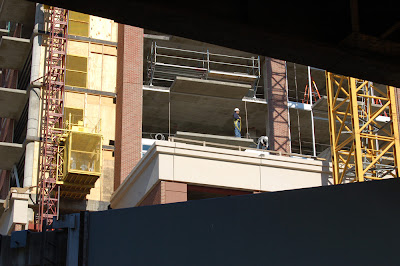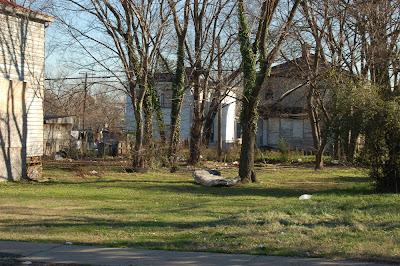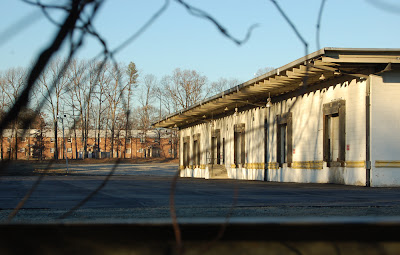A 25 Mile Bike Ride Around Richmond, Va; next eleven posts

I think a good portion of the pleasing aesthetic this buidling emits is because of it's marked contrast to the surrounding environment, which is dismal. Three people here were waiting for the bus along the cracked and potted sidewalk of Jefferson Davis Highway.
A few blocks north of the Model Tobacco building the abandonment continues. There are ten blocks between this point on Jefferson Davis Highway and it's intersection with Hull Street; that intersection is the largest in the south side of Richmond. On these ten blocks, nearly every building on this side of the road is abandoned, whether residential or commercial.

Looking back towards tobacco storage, the Model Tobacco building, and woman in her twenties walking down the street eating a chocolate crunch bar. This is a six lane highway.




















































